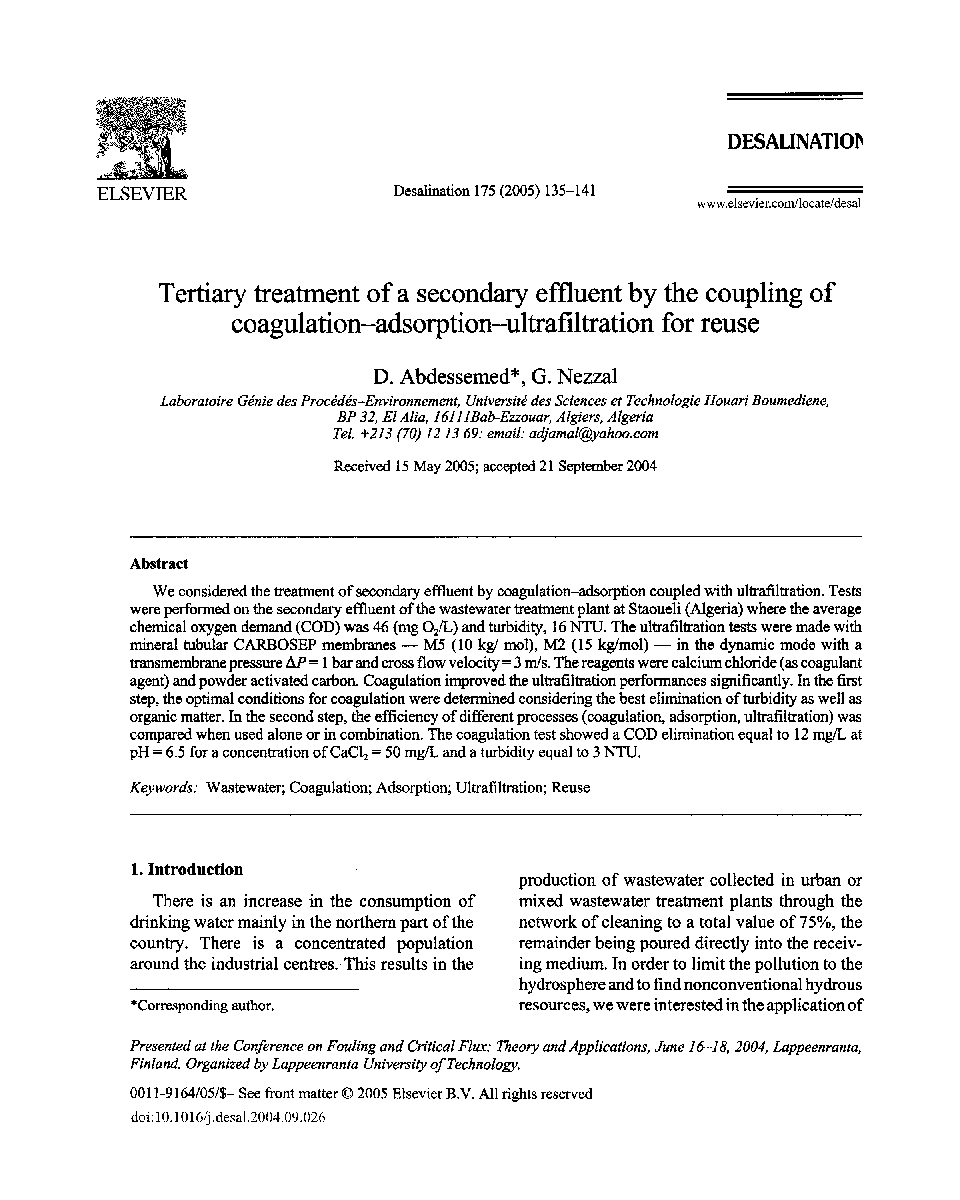| Article ID | Journal | Published Year | Pages | File Type |
|---|---|---|---|---|
| 10386341 | Desalination | 2005 | 7 Pages |
Abstract
We considered the treatment of secondary effluent by coagulation-adsorption coupled with ultrafiltration. Tests were performed on the secondary effluent of the wastewater treatment plant at Staoueli (Algeria) where the average chemical oxygen demand (COD) was 46 (mg O2/L) and turbidity, 16 NTU. The ultrafiltration tests were made with mineral tubular CARBOSEP membranes - M5 (10 kg/ mol), M2 (15 kg/mol) - in the dynamic mode with a transmembrane pressure ÎP = 1 bar and cross flow velocity = 3 m/s. The reagents were calcium chloride (as coagulant agent) and powder activated carbon. Coagulation improved the ultrafiltration performances significantly. In the first step, the optimal conditions for coagulation were determined considering the best elimination of turbidity as well as organic matter. In the second step, the efficiency of different processes (coagulation, adsorption, ultrafiltration) was compared when used alone or in combination. The coagulation test showed a COD elimination equal to 12 mg/L at pH = 6.5 for a concentration of CaCl2 = 50 mg/L and a turbidity equal to 3 NTU.
Related Topics
Physical Sciences and Engineering
Chemical Engineering
Filtration and Separation
Authors
D. Abdessemed, G. Nezzal,
